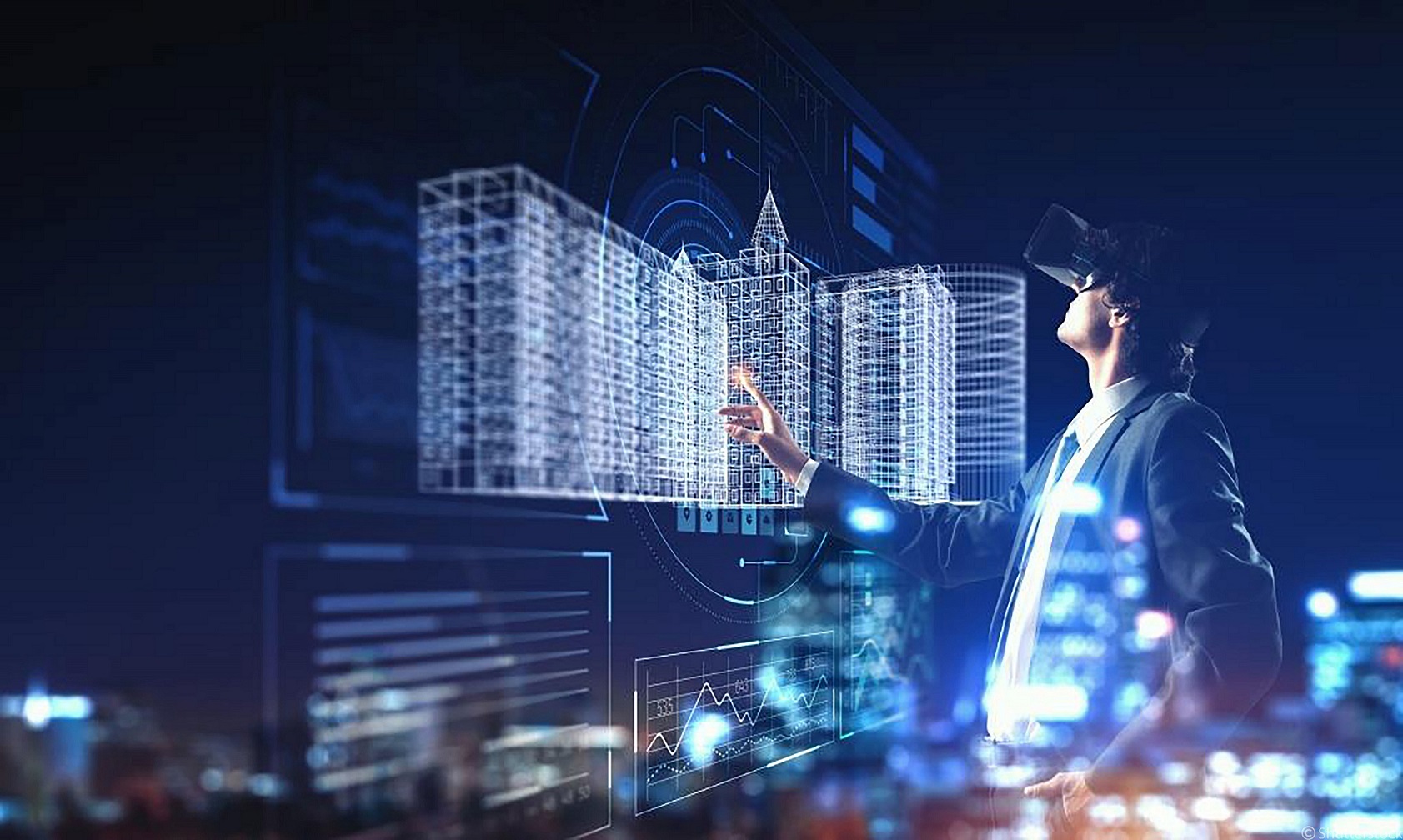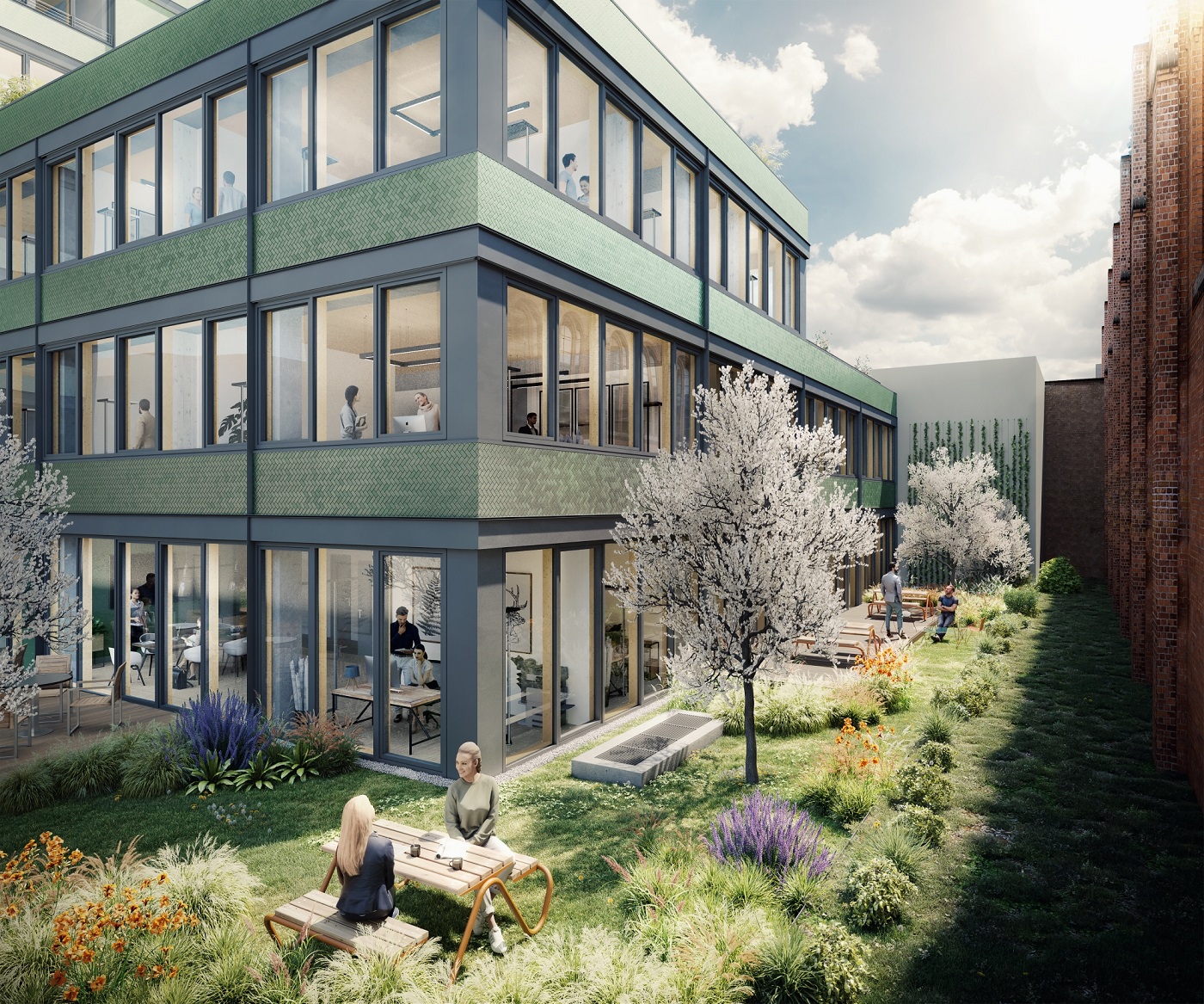TOP 10 REAL ESTATE TRENDS TO KEEP AN EYE ON
Many would argue that the real estate industry is not as innovative as other sectors and is even lagging behind in some areas. However, a closer look shows that quite a lot is actually going on at the moment. Although digitalisation is one important factor, the changing requirements and objectives of tenants and the people who use buildings play a major role as well, which in turn impacts construction methods and the entire real estate cycle.
In this article, we take a look at the top 10 trends that will shape the future of the real estate industry.

Table of Contents:
1. Modular construction
2. Sustainability
3. E-mobility
4. Building information modelling (BIM)
5. Blockchain
6. Big data
7. Artificial intelligence (AI)
8. Augmented reality
9. Virtual reality
10. Internet of things (IoT)
Trends in the construction and real estate sectors
Modular construction
It’s all over the media that there is a housing shortage in Germany and (affordable) housing is not being built fast enough. Modular building solutions are designed to address this issue. The modules are produced with dimensional accuracy at a manufacturing site. Electrical is installed there as well, which means that the only thing to do on-site is to put the finished modules together.
Those who think that modular buildings are not very attractive because of their modular construction are very much mistaken. For one, only a few of the building modules, like the bathrooms, are typically produced in series. And for another, modular grids can be adjusted, which means that builders can use a variety of stacking methods to create very different building structures. In this article, we cover more specifics as to how modular buildings work in real life.
Sustainability
The Fridays for Future movement is proof that sustainability is becoming increasingly important in our society. The real estate industry also needs to hop on this trend. Now that the EU’s Taxonomy Regulation has been passed, integrating ESG into the building process is no longer optional. Sustainability topics like cradle-to-cradle design were still in their infancy in early 2021. Today, we are seeing tremendous demand from investors when it comes to sustainability. Hybrid wood construction is becoming increasingly important and is in high demand. A number of certificates rate buildings based on their environmental performance, including DGNB, LEED, BREEAM and the Well Building Standard, which focuses on the health and well-being of the people using a property.
E-mobility
E-mobility is crucial in times that place importance on sustainable, green transport. Transforming transport systems has become more important than ever, particularly in view of the current fossil energy crisis. E-mobility providers are rushing to launch their products in cities around the world. The real estate industry is being impacted by e-mobility trends as well. All areas of real estate, whether it be logistics, office or residential, are restructuring and upgrading when it comes to charging infrastructure, electric charging stations, parking, etc. The Elbtower in Hamburg is a great real-life example.
Building information modelling (BIM)
Building information modelling is a software designed to optimise property planning, execution and management. BIM software collects, combines and models data from all parties involved, including investors, engineers, architects and even property managers down the line. Although many still think of BIM as a way to create a 3D model of a property, the software can do much more. It can depict the timeline and cost of a project, address life cycle issues and take building use into account. That makes BIM a great tool for the entire real estate cycle. While BIM cannot prevent errors, problems can be detected much earlier with the help of BIM software.
Digital trends in the real estate industry
Blockchain
Blockchain is considered the biggest revolution since the internet, making it a trend you should definitely keep an eye on. To put it simply, the blockchain is a decentralised database that enables transactions without relying on intermediaries. The cryptocurrency Bitcoin is the best-known example of a blockchain. Bitcoin allows users to make payments without the involvement of a bank or other intermediaries. All blockchains encrypt and compress any transactions that are made and then record them in a constantly growing directory, which you can think of as a kind of ever-growing cash receipt. Each transaction is considered a block, which is assigned a hash or a digital fingerprint. The block also gets assigned the hash of the previous block. As a result, the individual transaction blocks are connected with each other and form a blockchain. The blockchain is considered relatively secure due to the fact that its expansion is chronological and linear. Changing the blocks is almost impossible.
The blockchain also enables smart contracts, which get automatically triggered when a certain event occurs. Potential tenants can, for example, sign a lease upon entering an apartment without you having to be on-site. Real estate investments can also be made via the blockchain. Prop-tech company Exporo, for example, issued token-based bonds on the Ethereum blockchain for the first time in 2019.
Big data
Big data refers to large collections of data, most of which are unstructured and too extensive for traditional IT infrastructures and tools to handle. Big data is also associated with the technology that helps process and evaluate these (unstructured) data sets.
There are numerous applications for big data in the real estate sector. It can help optimise building maintenance, better assess investments and also improve internal analyses and reporting.
Artificial intelligence (AI)
Artificial intelligence is also a trend that is impacting all sectors across the board. Many of us already use AI in our everyday lives without realizing it like when streaming providers recommend songs or movies to us or when we use navigation systems. But what exactly is artificial intelligence? It involves a variety of different disciplines such as machine learning, deep learning and natural language processing. Put simply, AI is an algorithm that is intended to rival human thought. However, the worlds of research and business are still a long way from achieving this goal. True AI has only been achieved in certain areas such as chess or the Chinese board game Go. AI, however, is developing fast and should not be underestimated!
Augmented reality
Augmented reality (AR) is the computer-based extension of reality. AR can trigger all of the human senses through image, sound and space and can be expanded by adding virtual information via technology such as smart glasses, displays or smartphones.
Augmented reality mostly became known in Germany through the game Pokémon Go. The real estate industry can benefit from AR, too, by using it for tasks such as simulating design proposals or service offers. This allows customers to see whether the office furniture they chose will really fit in the new space or match in terms of colour.
Virtual reality
Virtual reality (VR) refers to the representation and perception of reality in a computer-generated, interactive virtual environment. VR users are not bound by the laws of physics, making the possibilities unlimited. Users need VR glasses or special rooms (CAVE: cave automatic virtual environment) to experience virtual reality. VR is mostly used in real estate to illustrate property developments.
Internet of things
The internet of things (IoT) turns industrial and everyday objects into smart objects, making it possible for them to communicate with each other. The objects can also be operated and controlled from any location. IoT functions on the basis of a network similar to the internet. The most common example used to explain how IoT works is a refrigerator that notifies its owner when certain food items are about to expire or need to be repurchased. IoT is most commonly used in building automation in the real estate sector where it enables predictive maintenance of equipment such as escalators, lifts and HVAC systems.
This is by no means an exhaustive list of all the trends currently going on in the real estate industry. There are a number of other trends specific to the different asset classes as well, such as the use of drones, 3D printing and much more.


